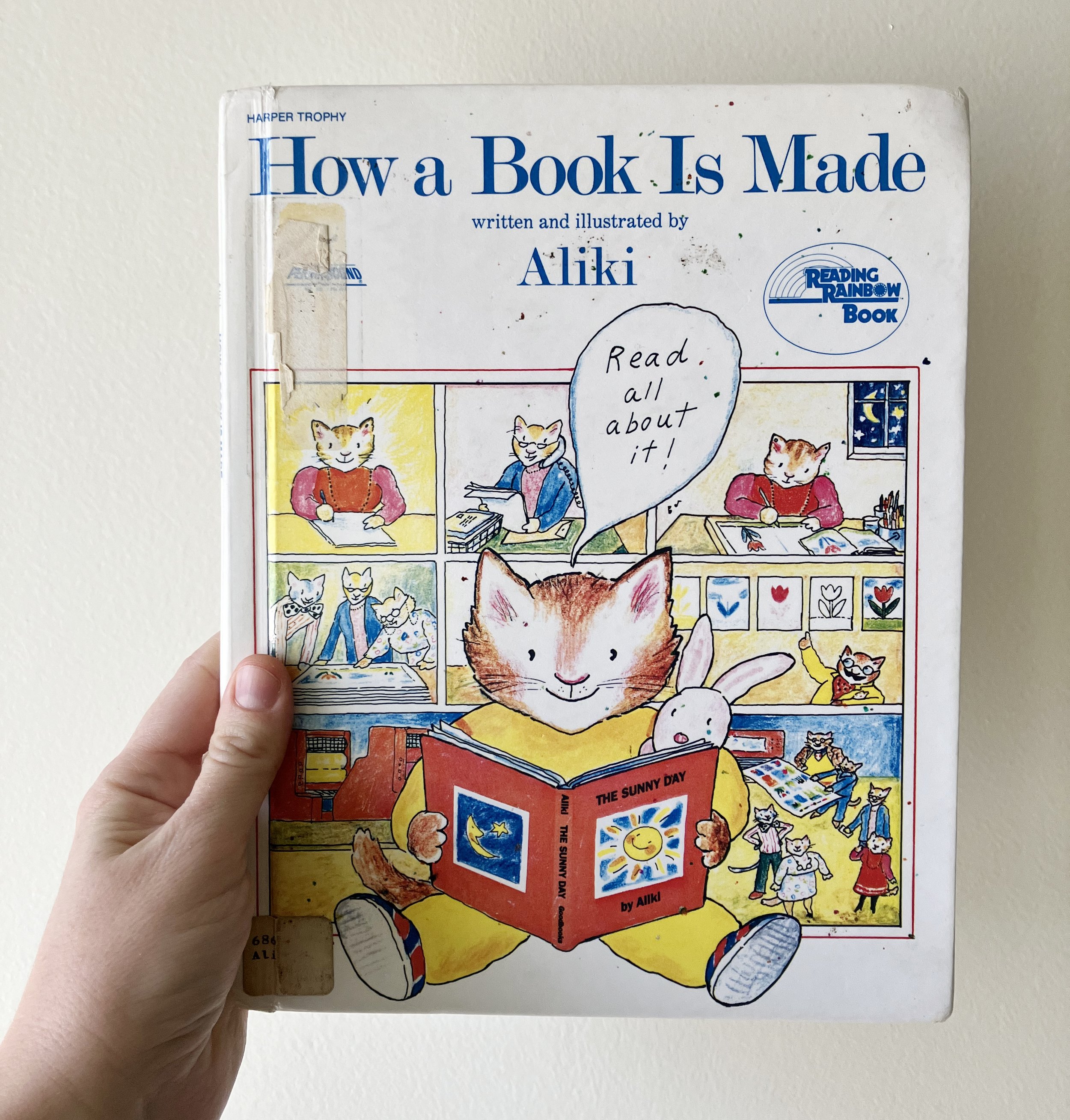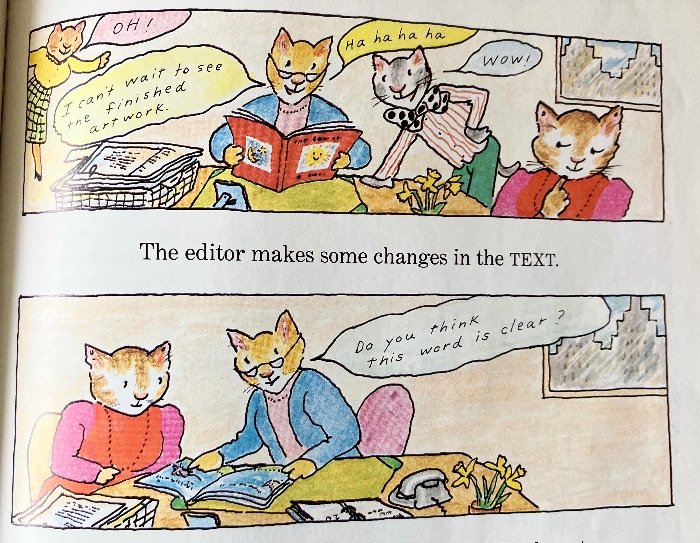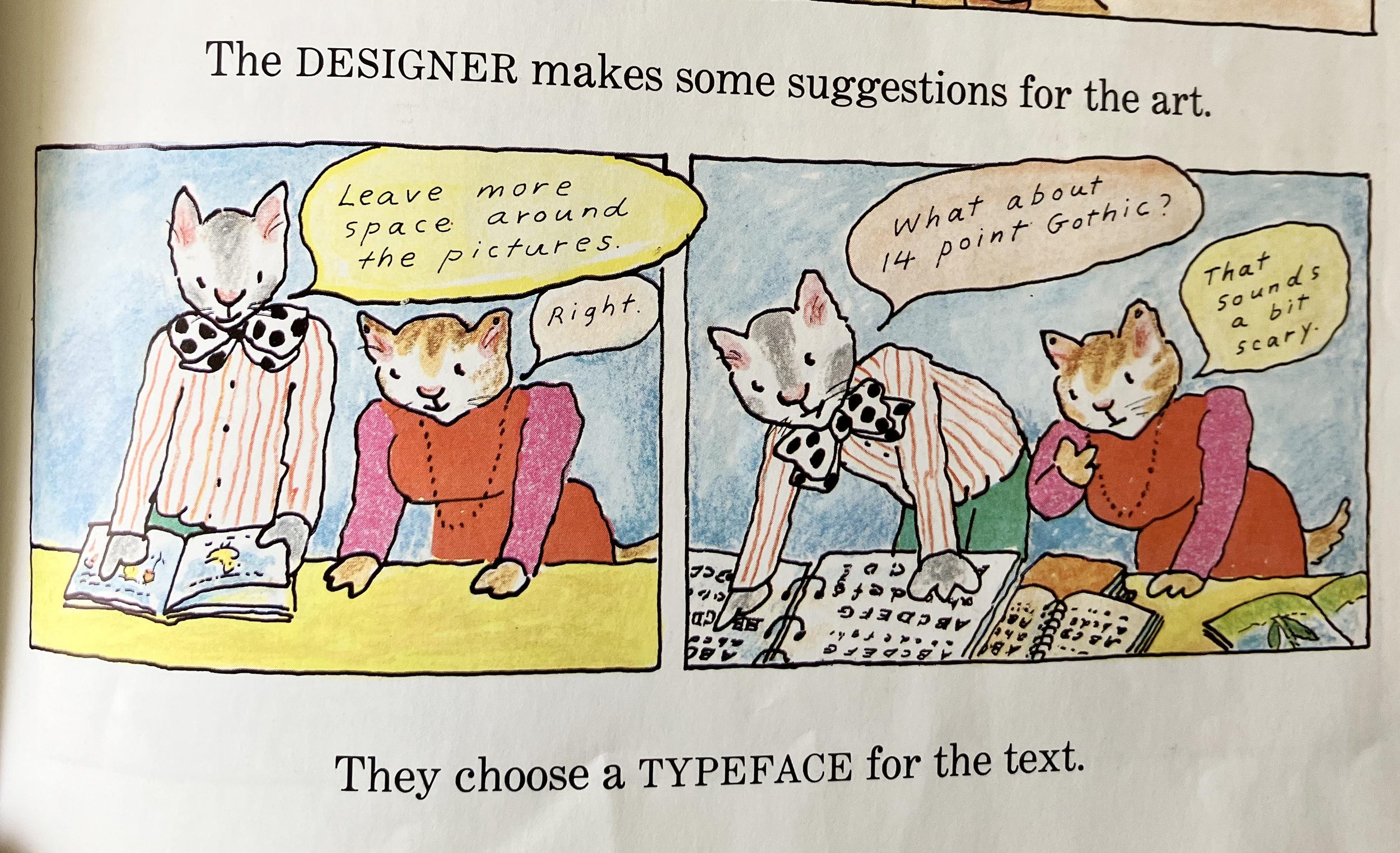Do you know how a book is made? Many first-time authors don't. Every year I receive multiple manuscripts that are not really ready for design and layout. 2022 was no exception. This post was originally a special edition of The Book Done Newsletter is to help you understand how a book is made and where editing and design fit into that process.
Recently while wandering around a second hand shop, I found this book from 1986 called How a Book Is Made by Aliki Brandenberg (published by Harper Trophy).
It was an entertaining reminder of how much has changed in the world of books and publishing in the last three or four decades, and helped explain why independent publishers have a hard time pulling all the details of a book together. Here are all the people (or cats) who were involved in making a book in 1986:
But now it's 2023, and print-on-demand platforms tell you that you can be an author simply by uploading PDFs and hitting "publish". It's hard to know whom you need on your book project team...or if maybe you can just DIY it? After all, you know how to make a pdf, right?
While you may be able to get a professional-looking book into print in 2023 without a few of these cats, this email will explain why you should not skimp on having professional help from an editor, proofreader and designer!
I have noticed a huge difference between my first-time author clients and my experienced author clients. The experienced authors submit manuscripts that are clean: edited and proofread and ready for layout. But the first-time authors often skimp on editing or proofreading (doing it themselves, asking a friend or family member to do it, etc.). This leads to one of two situations (and neither one is good):
A book that is released with structural or textual errors in it (which means the book will receive bad reviews, or at least not gain any positive attention), or
Major revisions to the manuscript after design and layout (when the book finally goes to an editor) which mean expensive changes, sometimes even meaning the whole book has to be laid out again.
I care whether your book was professionally edited and proofread.
I'm the designer cat though, right? Why do I concern myself about whether you hired an editor or proofreader?
I genuinely want your book to be the cat's meow—I care about the quality of your final product. I don't want you to get bad reviews (or no reviews) because you put a sub-par book out into the world. I strive to create book designs that are high quality, but they can't cover up poorly-prepared text.
I also don't want you to have to pay for major revisions to your book after layout (and quite honestly, I don't want to make the revisions! They're not nearly as fun as creating the original design and layout, and sometimes hard to fit into my schedule!)
I want to help you understand what a professional editors and proofreaders do.
During the past year I interviewed several editors in my network to pull out some information about editing and proofreading that would be helpful to you.
First, I interviewed Adina Edelman from Edelman Edits, and asked her general editing questions. You can read all of her answers here. Here's what I asked Adina:
Do I really need to hire an editor or proofreader?
Do I need to hire both an editor and a proofreader? What's the difference between editing and proofreading?
Can one person both edit and proofread my book, or should I hire two or more different people? What are the pros and cons of each approach?
What's the best way to find an editor or proofreader for my self-published book? How can I know that a particular editor or proofreader will do a good job? Do editors have specialties?
At which stage in the book writing process should I first get in touch with an editor?
How long does it usually take for an editor or proofreader to go over a manuscript?
What does it cost to get a book edited or proofread?
Does an editor or proofreader usually get credited in a book? If so, where is the credit line?
As 2022 progressed, I could see that some first-time authors think they are saving money by skipping the editing stage and just getting their books proofread, or not getting any outside input at all until the files come to me. But they end up spending even more money fixing their problematic manuscripts late in the game. So I talked to editor Chandi Lyn and asked her some further questions. You can read the full interview here. Here's what I asked her:
How would you explain how essential an editor’s services really are to an author? Isn’t hiring a proofreader to fix a few comma errors here and there enough?
How can an author actually save money in the long run by hiring an editor earlier on in the manuscript preparation process?
How important is it to have an editor who has experience with your particular book’s subject matter?
How can first time authors avoid expensive mistakes like hiring an editor who does not perform as expected? Does an editor guarantee their work somehow?
How can an author be sure that they are paying a fair price for editing?
How many errors would you consider normal for a proofreader to find after full layout and design? How many errors might be normal to find in a printed piece that has been professionally edited and proofread?
What’s the worst thing a writer can do when going through the editing/revising process?
OK, you get it.
And you're going to get your book professionally edited and proofread. As you get closer to releasing your book, here are some other articles that you may find useful!
Are you my type? Let's work together to get you to this day:
Let me know what you're working on, and when you think your edited, proofread manuscript will be ready for design and layout by using my book project questionnaire or book a live consultation. The process page on my website lays out what it looks like to work with me.







